As you may have read in the first part of this series my boss decided not to order the First 27 SE with a ready-to-go engine setup at the yard but rather opted to have it installed by our technicians in our own workshop for learning and training purpose. If this was a clever decision, I really don´t know, all I can say is that we for sure learned a load full of things about the Torqeedo engine and battery set-up, auxiliary parts and the Seascape 27 as a boat. For me as the owner and skipper this is a steep and valuable learning curve as well – nevertheless, we´d had experienced much less trouble if we´d got it readily set up by the yard.
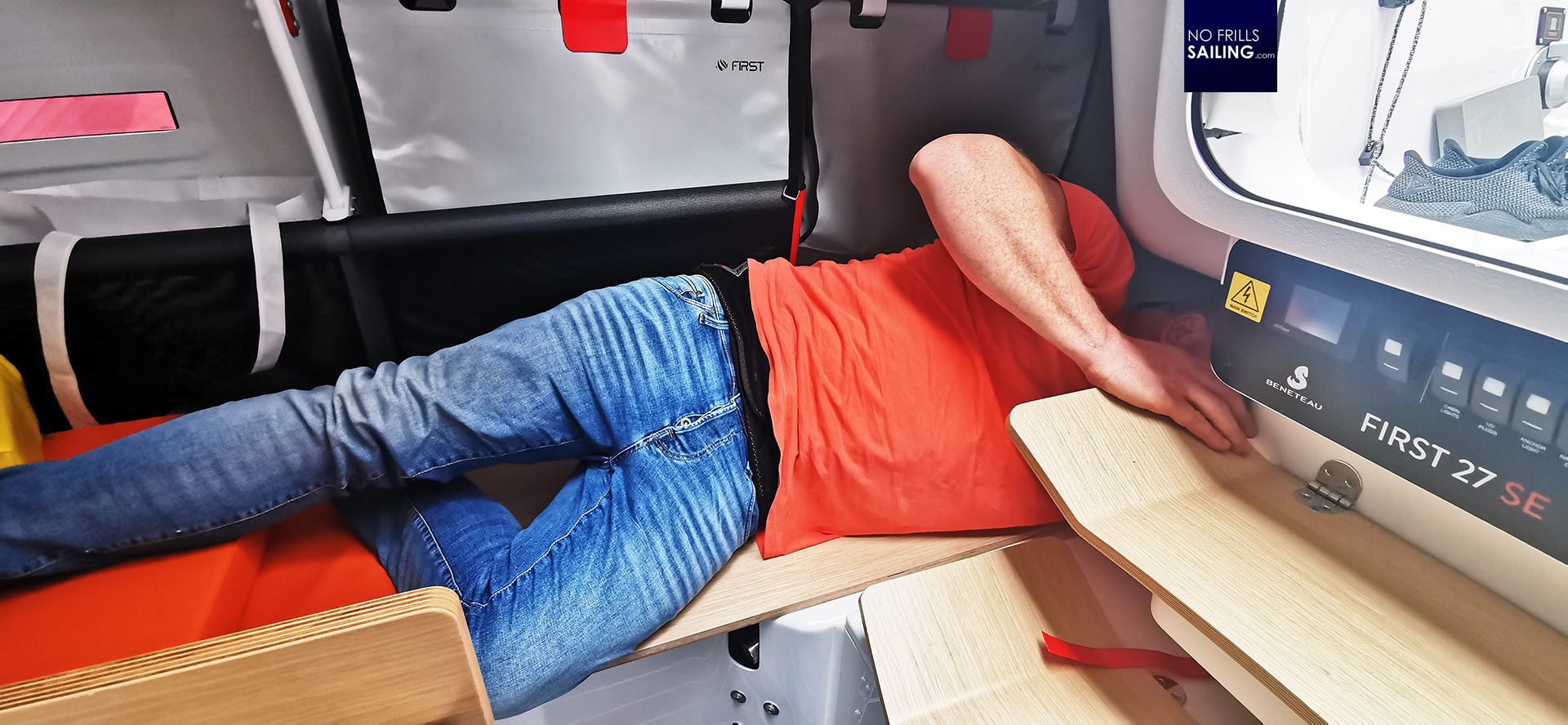
Anyway, after 2 days of works (of which most time was spent reading and studying the manuals, driving around shopping for parts and tools needed) the last ardently awaited part from Torqeedo (a data-link cable) finally arrived so that our Chief of Engineering, Sven, was able to take the last steps in this project. Interesting to see, by the way, how his mind changed and his attitude towards Torqeedo and products: At first he was very skeptical and criticizing around most of the time, during the final approach he was full of praise at least for the manufacturing quality of Torqeedo products.
It´s in the details …
Working inside the small boat was not an easy task: Although I cannot stress enough how big I find the internal space, especially the two aft bunks are in reality, working inside is a strenuous task: Holding up a drill or even an electric saw for cutting out cable holes and such makes you sweat. Working heads-up or tightening a screw without even seeing it was driving the blood up in our heads. Sven asked for my help and I joyfully went on to be his assistant, mostly countering screws or holding up a searchlight. We started by fitting the Torqeedo WH 48-5000 Lithium-Ion battery.
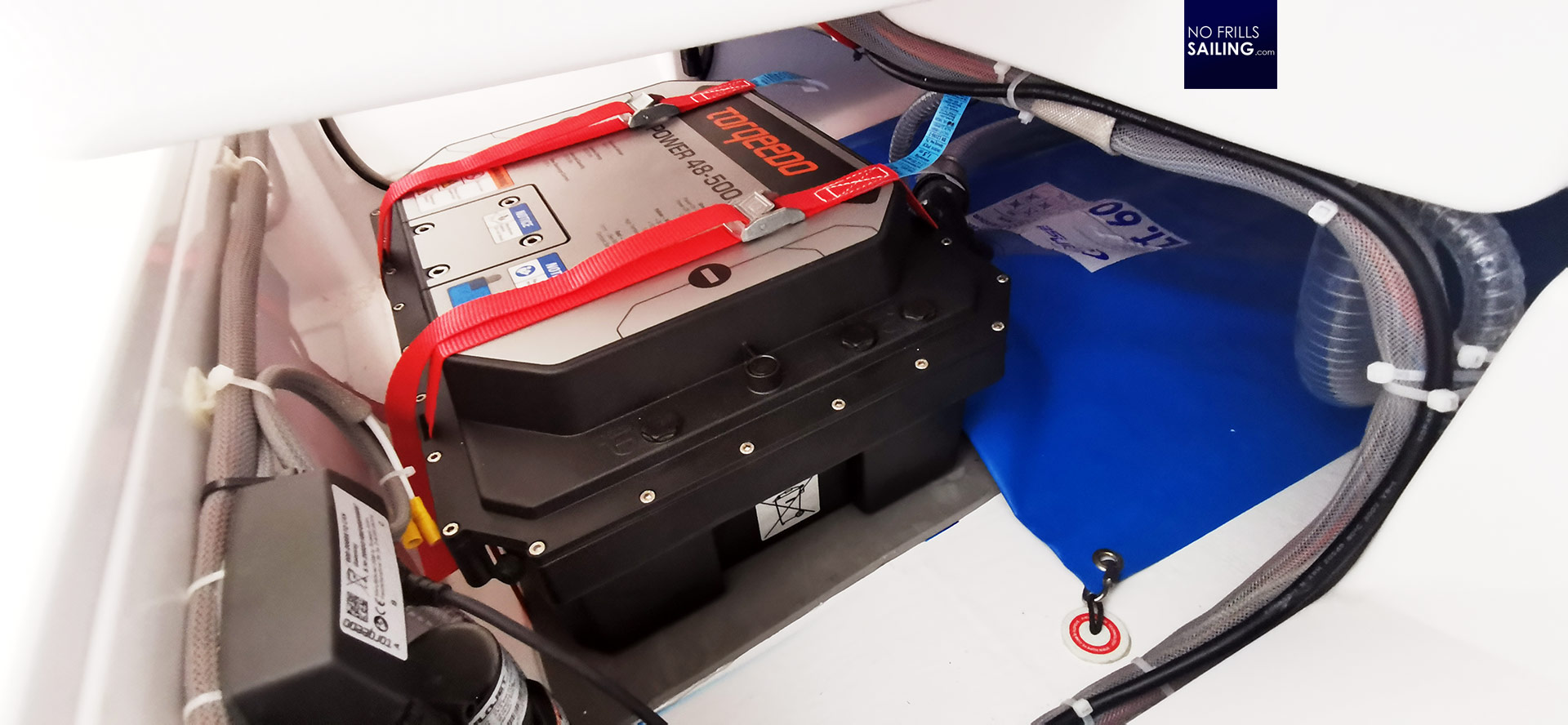
That is a big mother****er, I can tell you! The whole box weighs in at 36 kilograms, which in itself isn´t too much. But when you have to negotiathe this heavy duty high-tech part through a lot not much bigger than the actual battery, in a very awkward angle, trying not to damage the fresh gelcoat and you are only able to use one hand (of course the left, more clumsy and weaker one!) laying on your back … that is a task! But finally we managed it and the battery fitted just fine! We chose not to go by Seascape´s manual but came up with a new battery base with a strap on-solution which worked out superb!
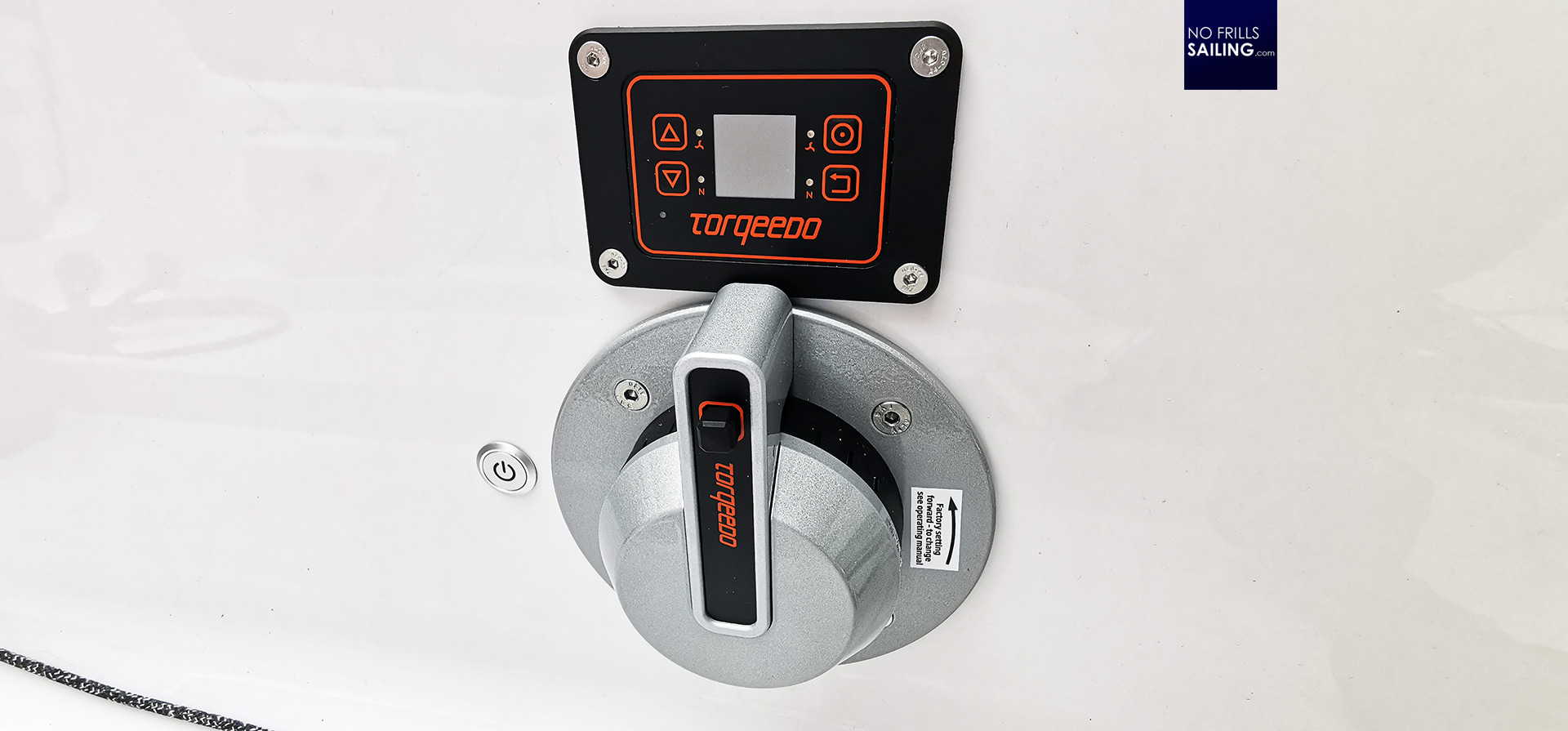
We went on the day finishing some minor details here and there, just like the small On/Off switch for the engine. Again, I was asked to mark the spot where to mount it and he followed suit. Sven was complaining about fitting manuals being not very precise and the fact that he had to come up with his own solutions. Frankly, I was happy he was able to and I think that his suggestions in the end are equally – if not better – good as the ones that would have been done by the yard.
Little and big obstacles, developable Customer Service
Things looked very good but there were always smaller and bigger issues coming up which began to hinder progress. First of all I might add that Torqeedo´s customer service in general is, friendly worded, a mess. I did not manage to get anyone at all at their phone-hotline, emails are not answered and if you get an answer it is formulated very un-specific without offering any solutions. Parts (paid in advance weeks and months ago!) do not come in one delivery but in dribs and drabs, leaving you unclear if and when the rest of the delivery will arrive. That is, mildly said, unacceptable and leaves a poor image of such a high-priced and otherwise totally spotless, perfectly manufactured product. Anyway, we tried our best to with what was available.
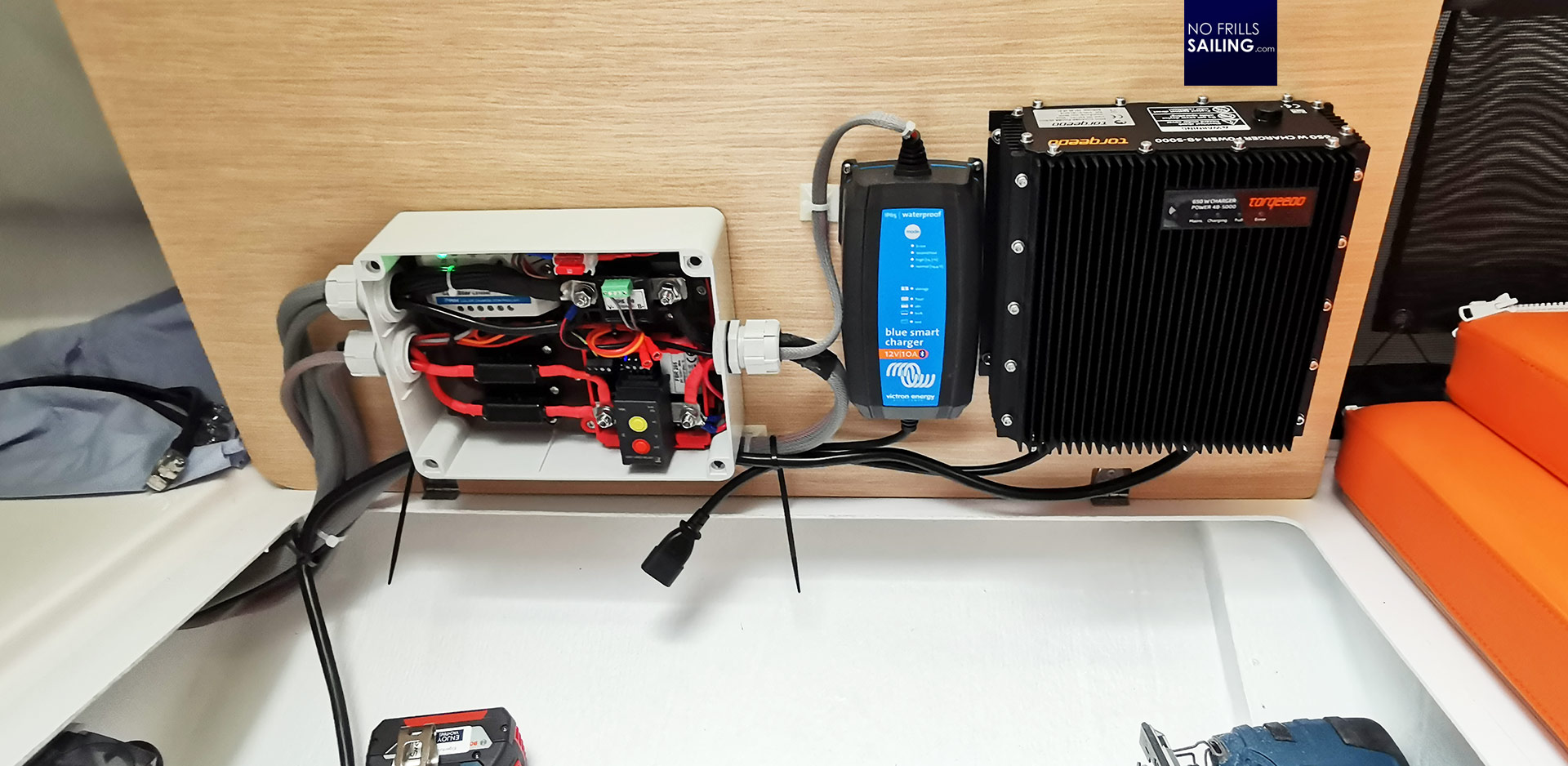
Sven installed the big-ass battery charger for the WH 48-5000, which is a very heavy duty piece of machinery. Just look at the picture and compare the charger for the small domestic battery to its left: big ass equipment! But once installed we learned that the 240 V-cable was far too short and that the plug installed by the yard was already occupied: So Sven had to install another 230 V-plug.
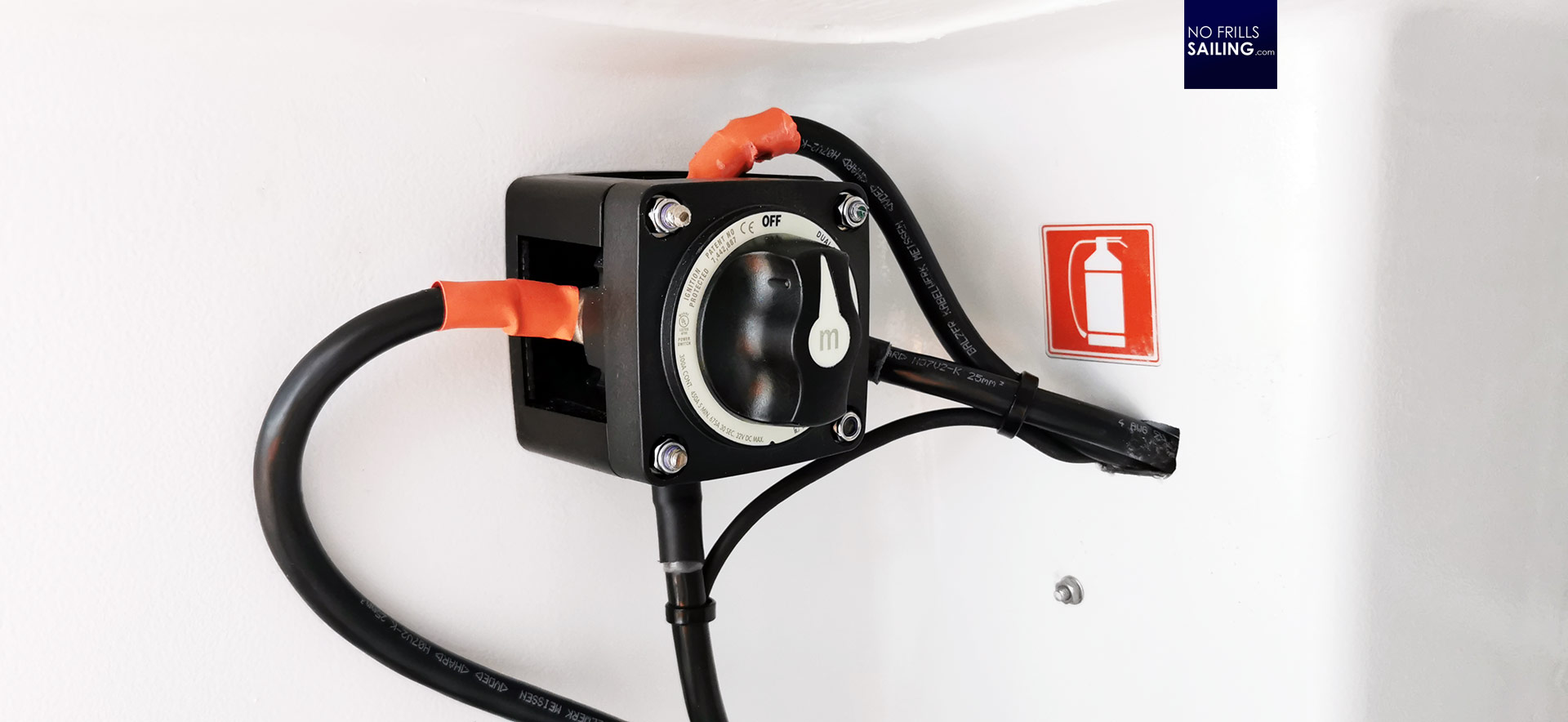
Talking of plugs and switches and equipment parts which seem to be too big for a boat that small, he also fitted the main switch for the battery, which also came apparently two sizes too large. A fascinating old school rotating switch which we all know too well from bigger yachts. So, in essence, I will have two separated electric circuits on board: Domestic power for LED-cabin-lights, keel operations, electronics and VHF on the one hand and the second circuit for powering the Torqeedo engine. It was fascinating to see how he was improvising and dealing with all the obstacles. Nevertheless some of them couldn´t be negotiated and we had to wait for the delivery of the products, such as the proprietary data-link cables by Torqeedo which couldn´t be improvised by Sven as tey are using their own connectors.
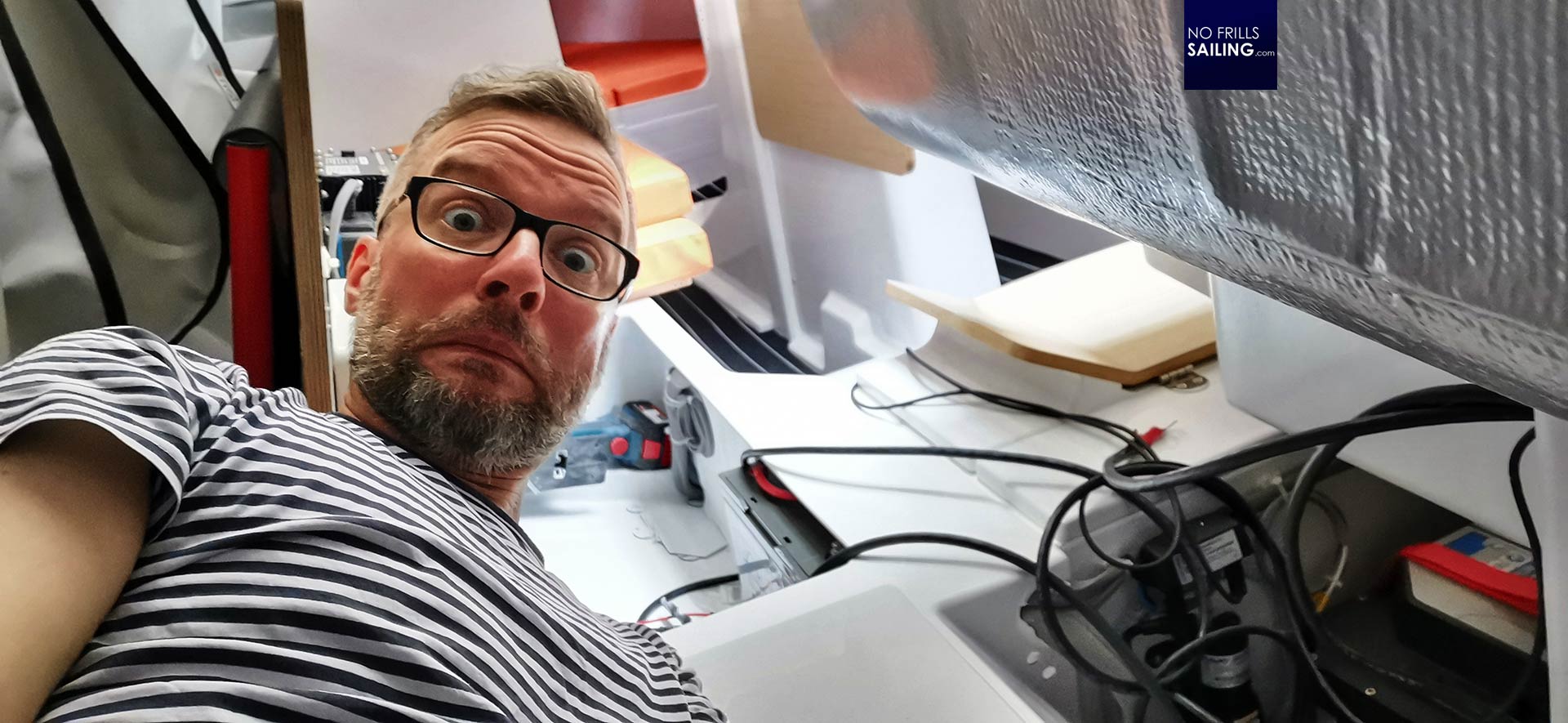
Working the boat was tiring, but successful: After the first final hours the most of those small jobs had been done and although our back was hurting we were excited. Kind of awkward to really see how much time was needed indeed to have the Torqeedo-setup installed. Sven stated that, provided everything was at hand and no part was missing, the job could be done in one and a half days by a well-trained mechanic. “Next time I am faster”, he said, smiling.
Final fittings of the Torqeedo Cruise 4.0
With the electric engine itself no big jobs were in sight that day, more or less smaller, cosmetic tasks were on the list: We fitted a small VA-hook to the hull to which, according to the manual, a red strap should be fitted to secure the propulsion unit when it is retrieved. Also, when the boat arrived from the yard in mid-winter this February, I also received big chunks of EVA-foam.
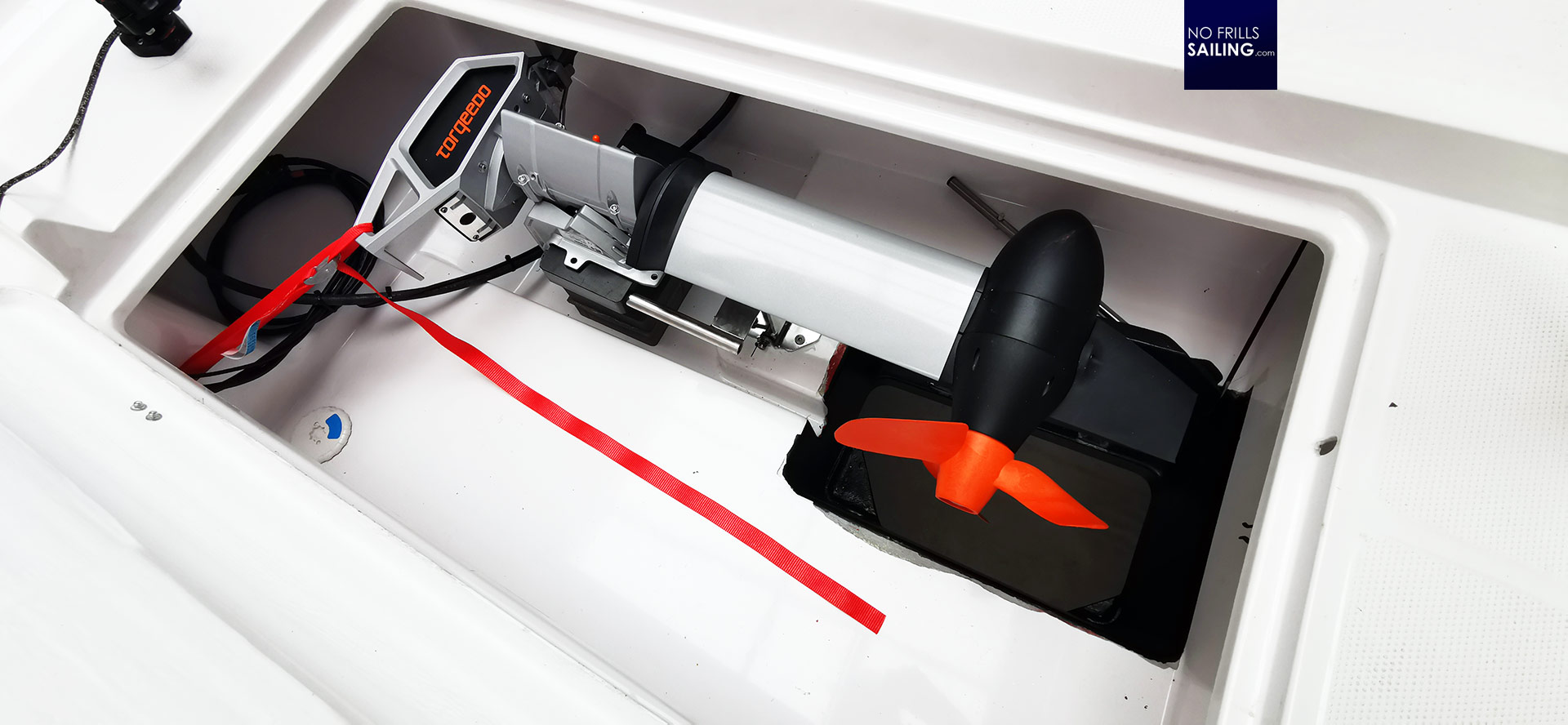
Putting two of them together with glue and having this big sandwich fitted to the bottom with Sika. It fits pretty well and works just fine. I refrained of cutting another one to put it on the fin itself as I wind that is unnecessary, but we will see how it works in reality. For now the
Acceptance test, dry: Does it work?
Apart from upcoming problems, or at least, trouble on the horizon in bringing the boat from sail mode to propulsion mode, I couldn´t see any problems after those three days of fitting action. I would say that in a situation when there is loads of waves or swell and motion within the boat, it will be tricky to ready the prop unit and get it out without hitting and scratching the shaft. But for now, we wanted to test the whole system in “dry mode”.
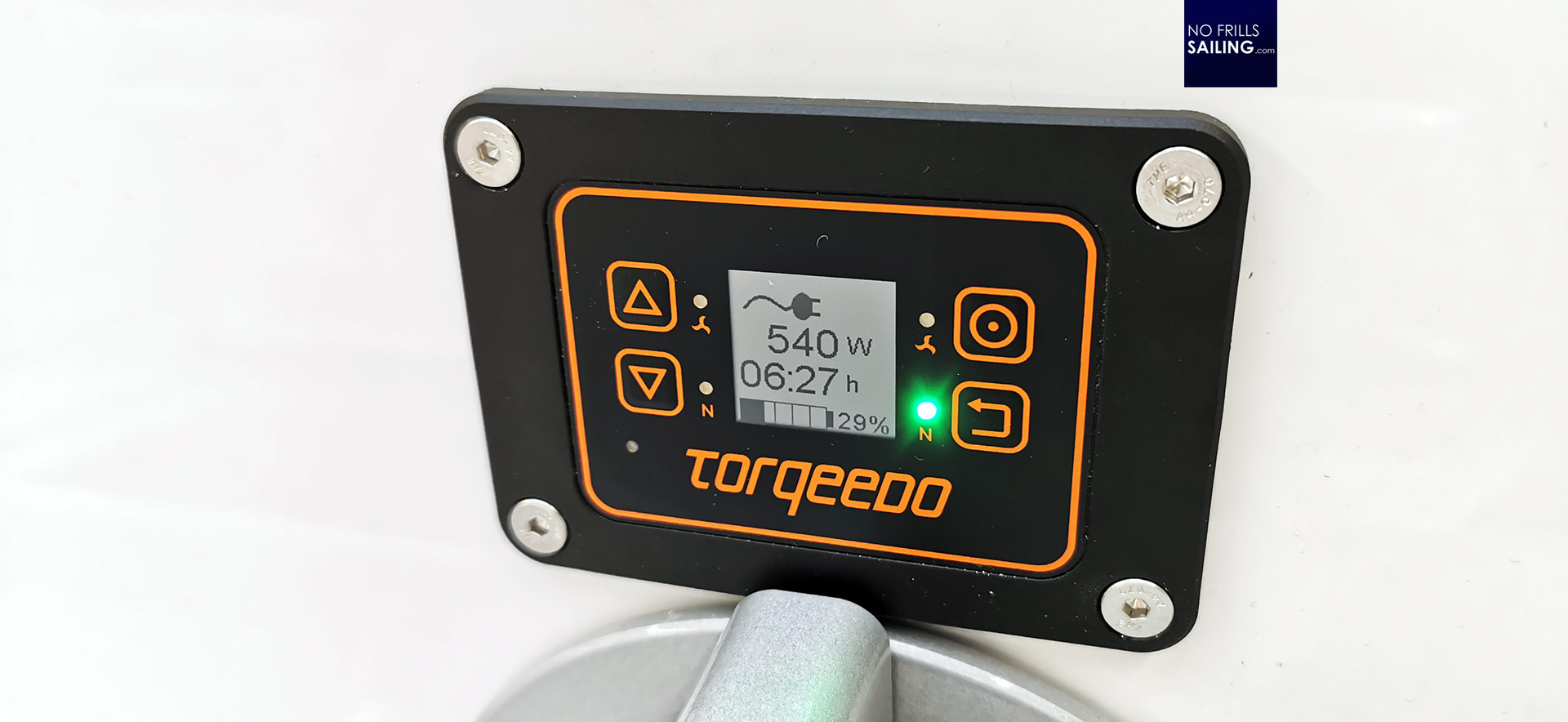
First, I checked if everything is turned off (the engine) and powered up the battery. I lowered the prop unit and turned the massive main switch to “on”. Back in the cockpit I pressed the “on/off” button of the Torqeedo drive unit and after one or two seconds green LED-lights indicated that everything was fine. Turning the lever to forward drive mode the screw began turning. The all-too well know sound of the electric engine hit my ears: And it was a very satisfying feeling. Although one shouldn´t do it when out if water, I increased throttle and the engine responded accordingly and flawless.
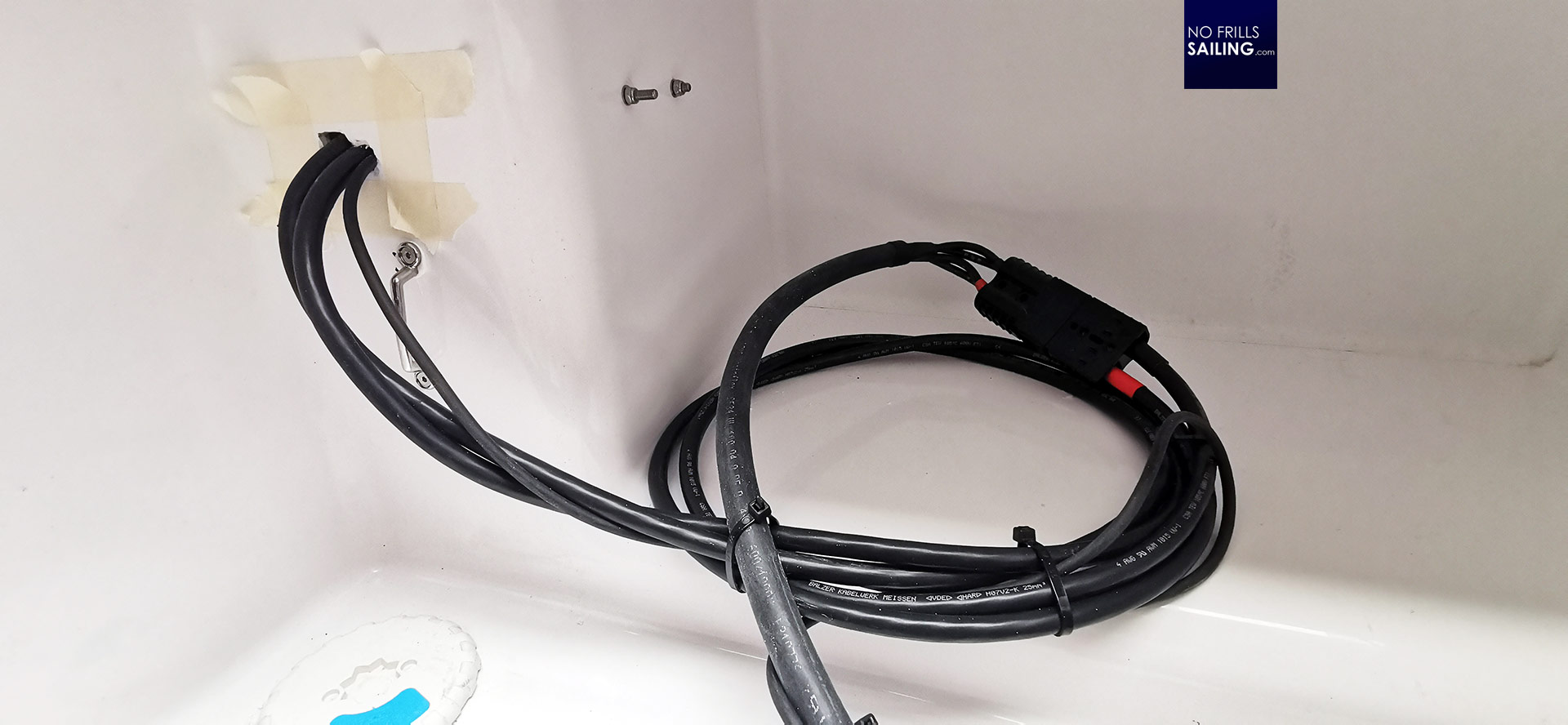
Last bits and pieces of works were no-brainers: I pulled out the Sika-press and sealed the cable holes in the hull from the inside and the outside whilst Sven was putting on cable-fittings to the power-cables of the propulsion unit. Another task for the coming days will e the shrink-wrapping of the connectors and waterproof sealing. For now, everything was fine, setup and ready to go.
DIY Engine Setup: Learnings
Now, what have we learned? First of all, the yards are doing a fantastic job! Now that I have witnessed with my own eyes what it means, I can say that it is not an easy task, both mechanically and technically and that it takes a load full of professionalism to do it properly. On the other hand we (I mean our mechanics) have detected several points where we thing we can do a slightly better job, for example when it comes to the counter-plate of the prop-unit mount.
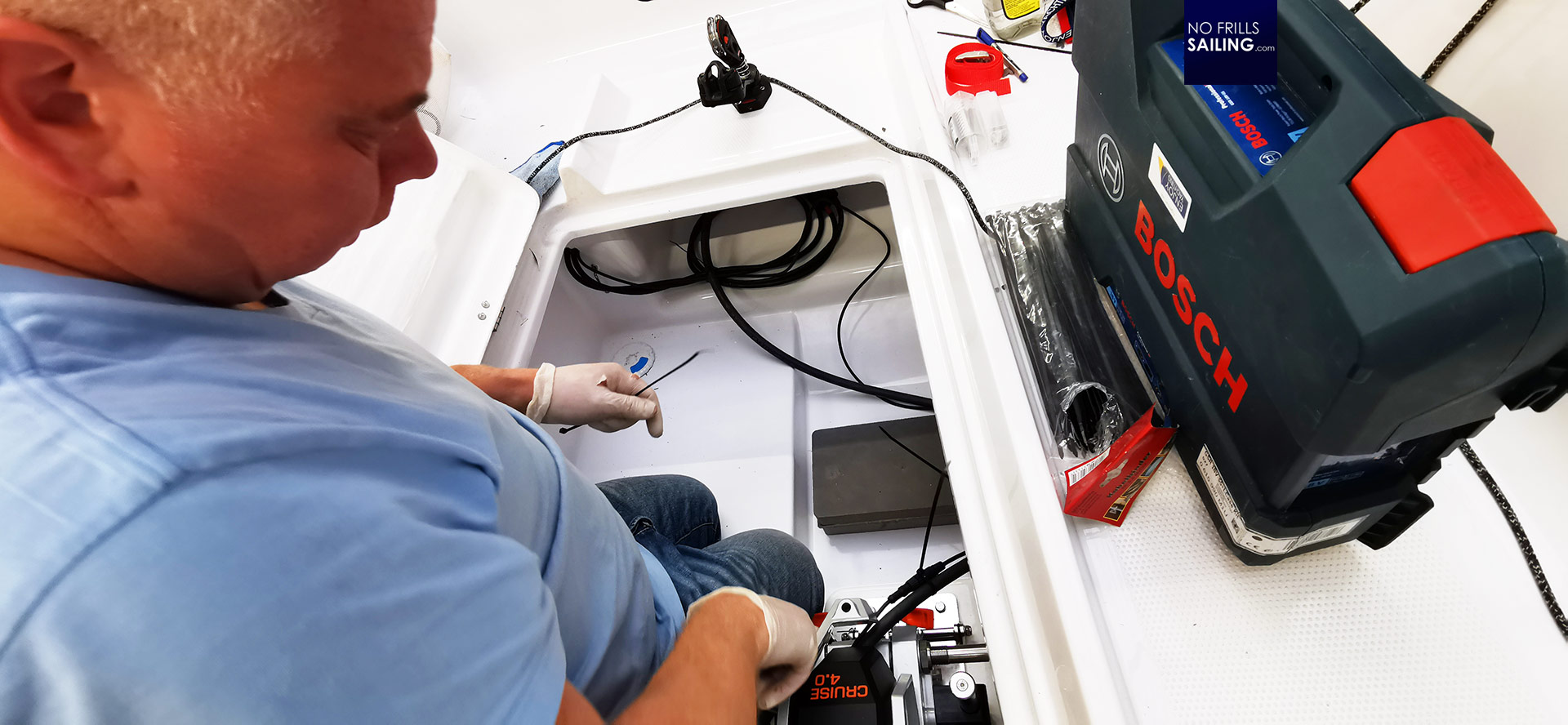
While Sven is applying the last bits and pieces and I am cleaning the boat from leftover GRP-dust and cutoff electric wires, we calculate that – provided everything is at hand, all parts are delivered and extra material ready to use – a full Torqeedo engine setup as mine can be done within a 20 hour net-working timeframe, which is quite fast I´d reckon.
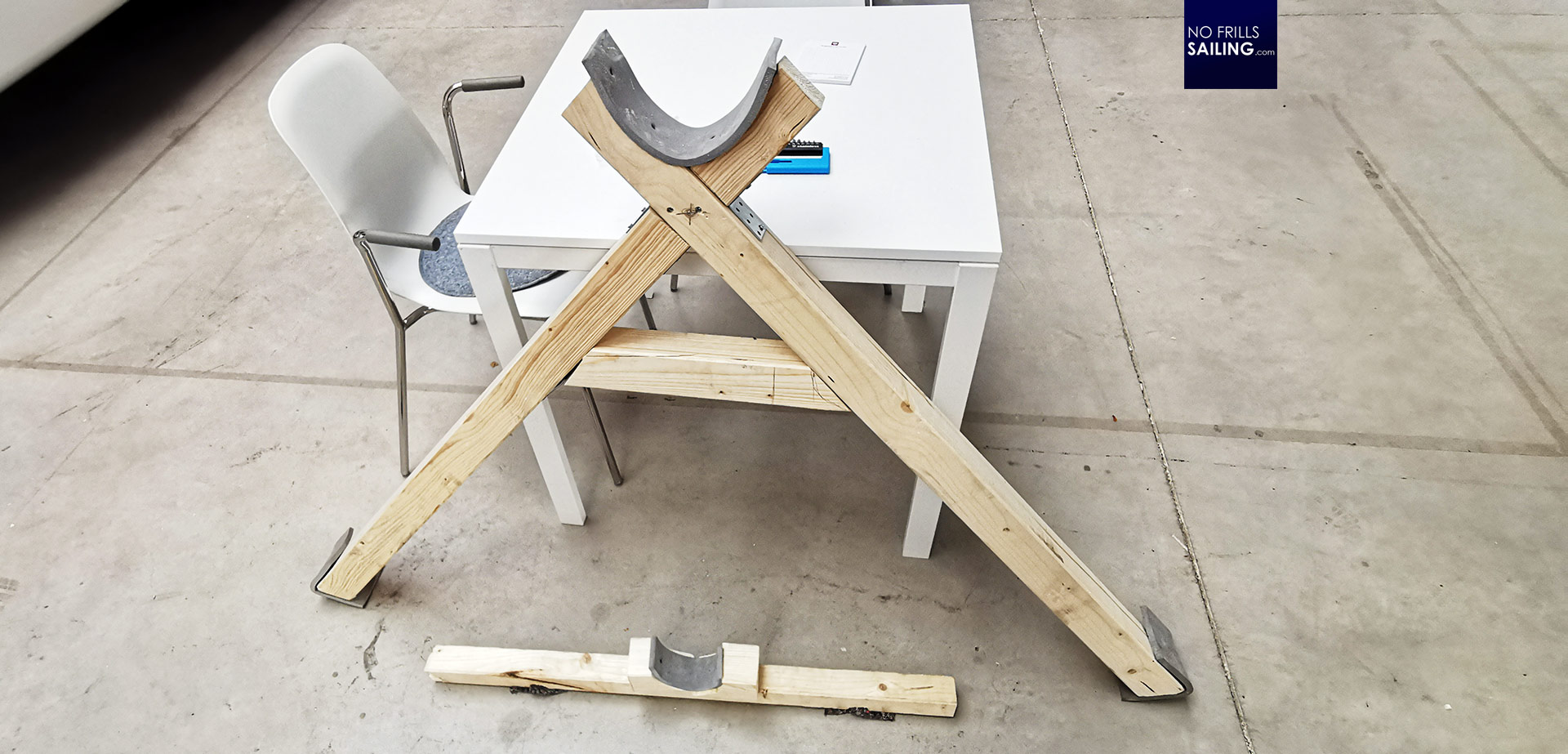
GEKKO is now ready to go: I fitted the new custom made mast support stands and secured them for transport. We will load the boat with boom, sails and surplus equipment and bring it to her new home port near my hometown of Luebeck, where she will be seeing water within the coming days. Exciting times indeed!
You might also like to read:
Torqeedo engine installation, part 1
Solar Power for sailboats: Calculations
